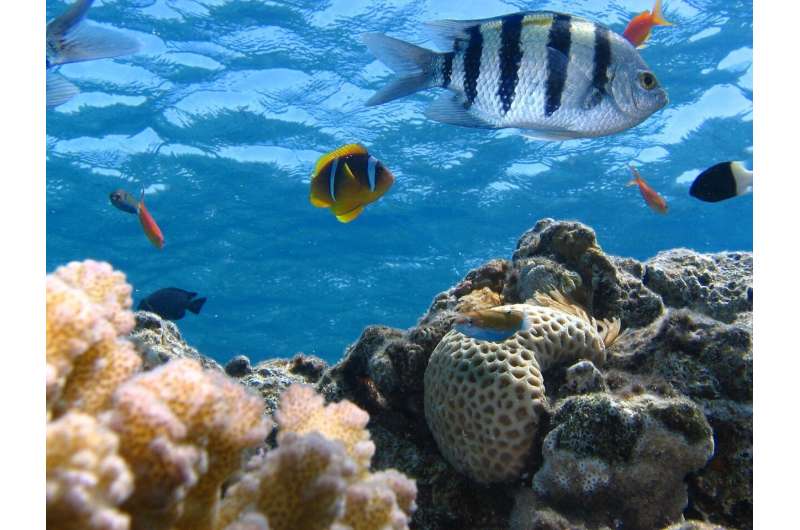This article has been reviewed according to Science X's editorial process and policies. Editors have highlighted the following attributes while ensuring the content's credibility:
fact-checked
trusted source
proofread
Light pollution threatens coastal marine systems, study suggests

Artificial light at night has a profound effect land-based life—from birds to fireflies to humans. But a new study suggests we need to widen our view to include light pollution's effect on coastal marine ecosystems, impacting everything from whales to fish, coral to plankton. This new synthesis of marine light pollution science is published in the journal Aquatic Conservation: Marine and Freshwater Ecosystems
"Sea creatures have evolved over millions of years to adapt to natural light intensity and patterns," explained lead author Colleen Miller who did this work while a Cornell Lab of Ornithology graduate student. "But now they face an ever-increasing flood of light from human development along the coasts and, except for a few case studies, we have a limited understanding about how it affects many species and entire ecosystems."
Moonlight and starlight serve as important cues for marine organisms and their glow can easily be washed out by artificial light. Studies that have been done on marine light pollution found shifts in hormonal cycles, inter-species behavior, and reproduction. One classic example is the sea turtle.
"Artificial light at night is harmful to sea turtles in two ways," said Miller. "Females trying to find a quiet dark spot to lay their eggs avoid light and may end up not coming ashore at all. Hatchlings head toward inland lights instead of moonlight on the water and then die of dehydration or starvation."
The very nature of artificial light itself is also changing with the widespread use of LED lighting. LEDs typically have more short wavelength light than older technologies and can penetrate deeper into the water.
The good news is that land-based efforts to go Lights Out for migratory birds will also benefit marine systems near coastal cities. Using as much red light as possible is another option because it doesn't penetrate as far into the water. It's even possible to put up barriers that would shield the coastline from artificial light.
"We also need to look at artificial light at night on a broader scale," said Miller. "We need much more data from a larger geographic area and over a broader range of organisms. We should be urgently concerned about how artificial light at night is affecting marine ecosystems."
More information: Colleen R. Miller et al, A synthesis of the risks of marine light pollution across organismal and ecological scales, Aquatic Conservation: Marine and Freshwater Ecosystems (2023). DOI: 10.1002/aqc.4011
Provided by Cornell University



















